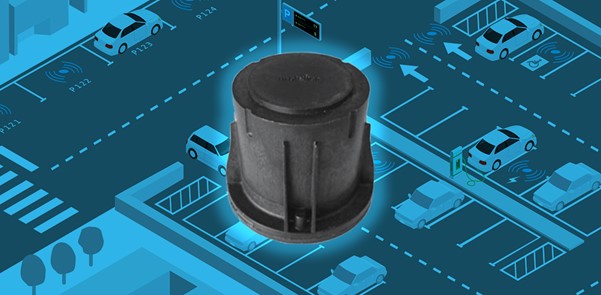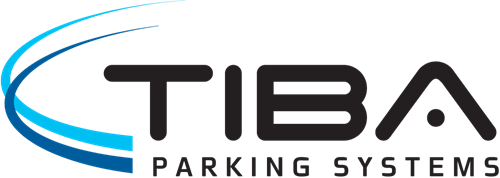Urbiotica: The Significance of Accuracy in IoT Sensors and Methods for Evaluating It

Cutting-edge technology is employed to enhance urban life, and this extends to more efficient parking management. In this domain, detection sensors play a vital role. But what exactly are they, and how is their dependability gauged in the realm of parking lots?
Advanced technology plays an essential role in enhancing the urban quality of life, with parking space optimization being one of its most prominent facets. Within this framework, detection sensors emerge as pivotal components. Yet, what precisely are they, and how do we gauge their dependability concerning parking facilities?
Detection sensors are essentially specialized devices designed to identify vehicles occupying and vacating parking spaces. Their primary function is to furnish accurate data regarding space occupancy. A notable example is the U-Spot sensor, facilitating the detection of single-space occupancy through flush-mounted, autonomous sensors. Renowned for their reliability, these devices effectively manage parking spaces across various functions, from monitoring reserved space misuse to furnishing drivers with real-time information on available spaces through information panels.
Moreover, these sensors not only detect parking space occupancy but also record status changes with vehicle arrivals and departures. This functionality is crucial for both usage monitoring and statistical data collection, significantly contributing to efficient parking space management in urban settings.
U-Spot: IoT Detection on a Per-Space Basis
U-Spot: Individual IoT Detection
Explore our autonomous flush sensors designed to detect parking occupancy space by space! Optimize space usage and enhance parking experiences.
Factors for assessing the reliability of vehicle detection sensors
Vehicle detection devices in parking areas rely on advanced technology to ensure maximum reliability and provide additional features, such as alerts to authorities when spaces are misused. Precision and error minimization are crucial in these solutions.
Reliability assessment varies depending on whether the system is for control or guidance. For guidance purposes, measuring space occupancy suffices, involving capturing the status of spaces at a specific time to provide overall place availability information.
However, for control systems, continuous monitoring of each space is necessary. Precise information on vehicle arrivals and departures, with a margin of a few seconds, is essential. Detailed tracking of each parking session ensures accurate monitoring of session start and end times, mitigating false starts and unjust fines.
At Urbiotica, we specialize in IoT and Artificial Intelligence technologies to positively impact urban mobility. Consequently, we ensure that our sensors offer high reliability and optimal performance in managing parking spaces.
Maintenance
Ensuring the continual optimal functioning of independent magnetic sensors is crucial for long-term reliability. The need for sensor maintenance depends primarily on whether the system's intelligence resides within the device itself or is managed via an IoT smart platform.
When the sensors contain the intelligence, regular sensor-by-sensor maintenance is necessary.
In the case of U-Spot sensors managed remotely from the platform, physical visits for management and control become unnecessary once installed. These sensors are maintenance-free.
Calibration
Accurate sensor calibration is essential for optimal operation. Automatic algorithms handle this process, and thanks to remote management in Urbiotica sensors, calibration is not a concern. The following aspects are checked during automatic remote calibration:
1. Proper functioning of communication network connections ensures faultless real-time information transmission.
2. Detection tests assess sensor accuracy and reliability in detecting space occupancy.
3. Sensitivity adjustment ensures sensor stability, unaffected by temperature, humidity, or asphalt wear over time.
Consideration of these aspects enhances system cost-effectiveness in both parking control and vehicle guidance.
Furthermore, Service Level Agreements (SLAs) must be specified in tender documents to ensure service quality and reliability. These agreements define measurable performance expectations and commitments, ensuring compliance with tender document standards.
Sensor Types and Technology
Sensor type and technology are critical for reliable vehicle detection in parking areas. Sensor quality and the complexity of manufacturing technologies largely determine reliability.
Notably, sensors developed with advanced technologies like Artificial Intelligence (AI), Deep Learning, and Cloud data management are the most reliable. These technologies enable sensors to learn and generate increasingly accurate information with better discrimination capabilities.
When assessing sensor reliability, various factors are considered:
1. Occupancy patrols involve checking all spaces to record current status compared to the detection system's information. Conducting rounds on different days and times ensures a robust reliability value.
2. Rotation assessment continuously evaluates status changes within a group of spaces over time. Similar to occupancy patrols, conducting assessments at various times and days is recommended.
Additionally, installation tests and periodic assessments are crucial to verify system stability and reliability. Conducting these tests annually ensures continued system reliability.
About Urbiotica
Urbiotica was born in 2008 with the mission to bring the most innovative technology to society through urban environments. Its vision is to help cities become more manageable, efficient, and sustainable, improving the quality of life of its citizens.




Comments
There are no comments yet for this item
Join the discussion